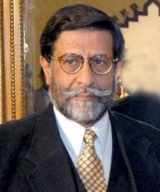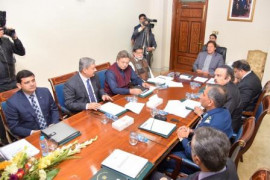
KARACHI: The Civil Aviation Authority (CAA) would separate its regulatory and airport services functions under the new aviation policy in a bid to enhance efficiency, said Aviation Secretary and CAA DG Shahrukh Nusrat.
He was addressing representatives of several airlines and media at a press conference on ‘Implementation of the National Aviation Policy (NAP) 2019’ at the CAA headquarters on Saturday.
He stressed that the new aviation policy was aimed at reducing the cost of doing business and for that reason, the CAA would focus on rationalisation of the paid-up capital requirement, security deposit and CAA charges.
“The policy will also steer the ease of doing business by rationalising aircraft age, licence regulations and paid-up capital regulations,” he said.
Answering a query about unhygienic toilets at airports, he pointed out that the separation of CAA functions into two branches (regulator and service provider) would enhance service quality and standards.
“The CAA is the provider of airport services and navigation services besides being a regulator of these services,” said the new aviation policy. “This inherently creates a conflict of interest, therefore the role of CAA as a regulator shall be made independent of service providers with financial and administrative autonomy within a period of two years.”
This would be done by setting up a regulatory cell within the CAA, it said.
To improve services, the CAA would be shifting towards public-private partnership (PPP) model keeping in view the development and management of airports. It would begin with medium-sized airports like Gilgit, Skardu and Chitral and subsequently move towards bigger airports.
“The public-private partnership model would also be implemented to improve revenue streams and the quality of service,” read the policy. “Airport terminal side may be outsourced to world-class operators of international standing through transparent and competitive bidding.”
It added that an appropriate consultant would be hired for outsourcing of such facilities at airports and the CAA would shield the revenue either in shape of annual fee structure or through an appropriate equity partnership model.
Under the new policy, the government would introduce Greenfield and Brownfield concepts for airports.
The policy stated that excessive taxation on air transport had an adverse impact on the growth of aviation sector as well as on economic and social development. Whenever a new tax on aviation industry is levied, it gets transferred to the consumer through a hike in ticket price.
“Excessive taxation by the Federal Board of Revenue has led to the restriction of growth of CAA activities in Pakistan,” said the new policy.
In the upcoming budget, a relief in taxation is expected and tax incentives will be applicable with effect from the first day of the new fiscal year.
CAA audit objections reviewed
Federal excise duty (FED) rates would be made reasonable to support the airline operators, it said. “In order to promote manufacturing industry, the government is going to offer incentives for new players by granting 10-year tax holiday to existing and new aircraft manufacturing industry setup, maintenance and repair,” it said.
The government may consider reducing the FED on air travel and air cargo, it added.
The authority has suggested exempting FED for routes of 500 kilometres or less because most of these are socio-economic routes like Muzaffarabad and Saidu Sharif. The authority would also rationalise non aeronautical charges in accordance with the market.
Published in The Express Tribune, April 28th, 2019.
Like Business on Facebook, follow @TribuneBiz on Twitter to stay informed and join in the conversation.


































































COMMENTS
Comments are moderated and generally will be posted if they are on-topic and not abusive.
For more information, please see our Comments FAQ